An Interview with Josef Brinckmann
Saving the World
In 2004 Josef Brinckmann was visited by the Wildlife Conservation Society (WCS) about their tiger friendly project for wild harvested forest herbs and fruits in the Russian far east. He was VP of R&D at Traditional Medicinals (now Research Fellow, Medicinal Plants and Botanical Supply Chain at TM) and happened to be looking for new sustainable sources of wild schisandra berries. At that time, he was also serving on the decision board of the ISSC-MAP (International Standard for Sustainable Wild Collection of Medicinal and Aromatic Plants) which eventually became a component of the FairWild® Standard.
The initial commitment to the WCS tiger friendly project (which unfortunately didn’t work out in the long run) led to what so far has been a more than fifteen year partnership with NGOs, companies, and governments to develop sustainable ecosystem management and harvesting, initially of tiger friendly Schisandra (Schisandra chinensis, Schisandraceae) fruits (with WCS) but later panda-friendly Schisandra sphenanthera fruits with World Wide Fund for Nature (WWF). The panda-friendly project is significant for a number of different reasons: China is the largest user and exporter of medicinal plants, many of which are wild harvested often unsustainably.[1] The project also resulted in the first wildlife friendly certification by the Chinese government, a China national standard for panda-friendly products. And finally, it emerged out of the close collaboration of a range of partners that in itself serves as a model for addressing the challenging and multi-dimensional biodiversity conservation.
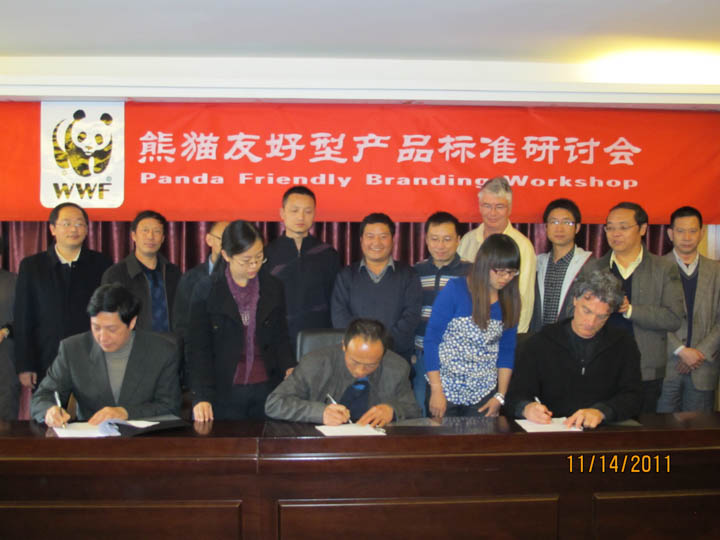
2011 photo of signing ceremony (5-year letter of intent) at the 1st panda friendly branding workshop in Chengdu (where the first version of the panda friendly standards was drafted) – left to right, Jerry Wu (Draco Natural Products), Huizhou Tang (Pingwu Shuijing Traditional Chinese Medicine Materials Cooperative), and Josef Brinckmann (Traditional Medicinals, Inc.)
Josef and his partners on the project describe the project in detail in their recent article “Sustainable harvest, people and pandas: Assessing a decade of managed wild harvest and trade in Schisandra sphenantherea.” I was interested in learning more about Josef’s personal experience working on this project for the last decade and we spoke recently on the phone.
As with all conversations with Josef, it was fascinating. And while he touches on many different topics, as always, he comes back to the importance of biodiversity conservation, which he believes is one the most urgent issues of our time.
“I don’t use the term save the world tritely,” he said. “As a naïve teenager, I wanted to save the world and now that I’m in my 60s, I still believe that’s what we should do – I mean, what else is there to do here?” he asked, laughing.
I share some of the highlights of conversations. As you can see, I didn’t ask many questions. As anyone who has spoken with Josef knows, questions are simply a prompt – the real task is writing fast enough to get down everything he says!
Healthy Ecosystems and the Botanical Industry

Schisandra chinensis, Schisandra, Wu-wei-zi, 五味子, wei-zi, a member of the Schisandraceae or Schisandra family, is a famous herb in Traditional Chinese Medicine. The Chinese name translates into five-flavor fruit (sweet, sour, bitter, salty, and pungent). The fruits are an official remedy in the Chinese Pharmacopoeia. It was first listed in the primary class of herbs in the classic first century herbal of the divine plowman emperor Shen-Nong, Shen-Nong Ben Cao Jing. Virtually all of the herbs listed in his primary class of herbs are the most important Chinese medicinal plants today. Traditional uses of Schisandra fruit include the treatment of nervous conditions, cough, and liver conditions, in addition to being a general tonic. These uses have been confirmed by modern research. The fruit is widely used in tonic or adaptogenic and liver formulas. Photo by Steven Foster.
Ann: So, to begin with, can you talk about how you became interested in linking medicinal plants with wildlife and biodiversity conservation?
Josef: On field visits beginning around 2004, I realized we needed to not see the products as separate from the environment, but to be concerned about the people and plants and livelihoods that depend on a healthy ecosystem and that animals were part of that. We had to pay attention to the whole nexus of biodiversity.
If you are in the natural products industry, you have to be concerned with nature because your raw materials are from nature. If you don’t protect nature, you won’t have ingredients for your silly products!
So it’s just a ‘duh’.
Josef laughed, and added, “Well, it should be.”
But at that time it was hard to find anyone beyond specialists who could even define what biodiversity conservation meant, especially anyone in the industry. People just didn’t know.
I would read reports of NGO’s interviewing people in companies that wouldn’t even know if the plants they sourced were from the wild. Now there is growing awareness – there are signs that more people ‘get it’ but there is still so much more to do.
Ann: What is the role of companies in doing that?
Josef: Fifteen years ago, I gave a talk on sustainable botanical supply chains and I concluded that as long as buyers at companies are rewarded for coming in under budget rather than for sustainability and developing relationships and continuity and quality, we’re not going to have a sustainable supply chain.
Instead, buyers and procurement staff need to be told that they will be evaluated on how well they maintain positive relationships with producers. If a buyer gets a positive score for saying they had to pay a nickel a kilo more because the production company they buy from said their calculations showed that’s what was needed to be profitable, now we’re talking.
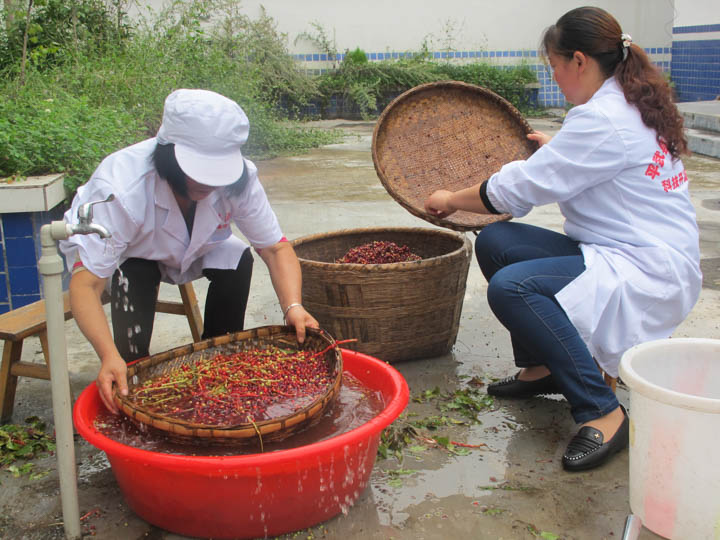
Post-harvest washing of berries, photo by Josef Brinckmann
Yet, still to this day, in any company, at the end of the year, the purchasing department is going to be asked to stand up and listen to applause for coming in under budget and cutting costs. It doesn’t matter which company.
So that’s incongruous. It’s a big disconnect.
Josef laughed again.
Ann: What factors helped the project succeed?
Josef: If the company I was working at hadn’t been fully supportive of me investigating these new ideas and funding it, nothing would have happened. No one questioned me when I said, “I need to go to this workshop for four days or to China or to do this fieldwork.” Traditional Medicinals was co-founded by Drake [Sadler] who sees companies not as just a place to make money and sell product, but as a vehicle for change.
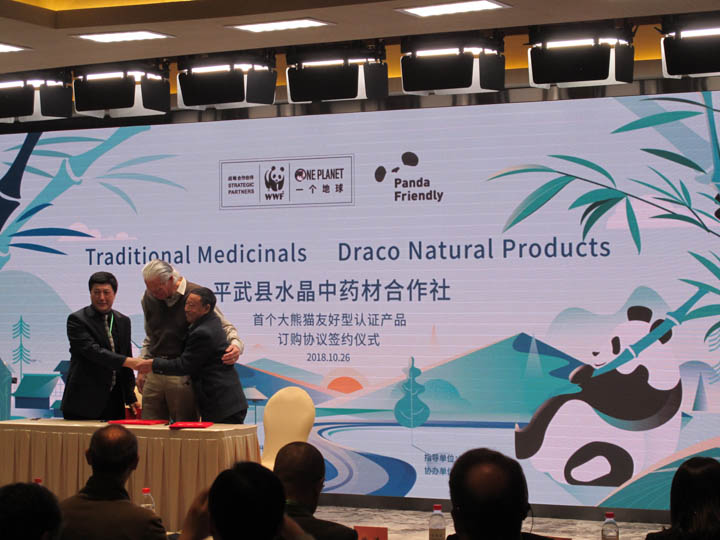
2018 photo of signing ceremony at the panda-friendly standards launch event – left to right: Jerry Wu (Draco Natural Products), Drake Sadler (Traditional Medicinals, Inc.), and Zhongping Luo (Pingwu Shuijing TCM Materials Cooperative).
You need to have a company that says, “We want to change the world. We want to change the commerce of herbs.”
That’s Drake’s mantra and that allowed him to say to me, “Go for it. Figure it out. Participate. Get our partners in. Leverage that to get other partners in our value chain to participate. Get people from big companies to come to meetings to see what is going on.”
Relationships Matter
The deep friendship and camaraderie of people also made a tremendous difference. Folks from WWF-China and Chengdu TCM University and from other participating companies and we all hit it off. That often happens when you are sequestered together with people in remote places doing difficult tasks. You form close friendships and those help you get through the challenges of the projects.
Ann: Ben Heron made the same point to me in a recent conversation about his experience setting up another FairWild wildlife centered project, Pukka and AERF’s bibhitaki project in the northwestern Ghats of India.
Josef: Yes, that’s often the case. I just formed some terrific friendships that are now leading to other possible projects.
I was invited into a wonderful world that made my work more meaningful, that made the products – products are products. Products are not herbalism but they contain herbs. Products are not biodiversity conservation but they can support it. Being involved in this project made my work sourcing sustainable ingredients that much more meaningful.
I built bonds with people who see the world the same way and see the big challenges we face and who are committed to working to make a difference.
Josef then talked about some of the details of the project itself, many of which are also discussed in the article. Below are some of key points from that discussion.
Josef: We also made it clear to the TCM cooperative that it wasn’t sustainable for them to have one customer. I’m straight with people. I ask, “What if you do all this, you spend years and years developing all this, and the company I’m with decides to discontinue a product or goes out of business or the economy in the US goes bust you need to be economically viable?” I told them to diversify the products they offer and the companies they sell to.
So I think what made the difference was personal relationships and a common understanding of what needs to happen. Supported by evidence of a marketing interest. There was no most important partner but I’d say that if the companies involved dropped the ball, that would be the first part that made it unravel.
Wildlife Friendly Products
Ann: So what does this experience make you think about future work with wildlife and medicinal plants?
Josef: I’m starting to think that we can get more done protecting wild plants by focusing on animals. Wherever I go, it’s not that hard to think of an emblematic animal that lives here that might need protection.
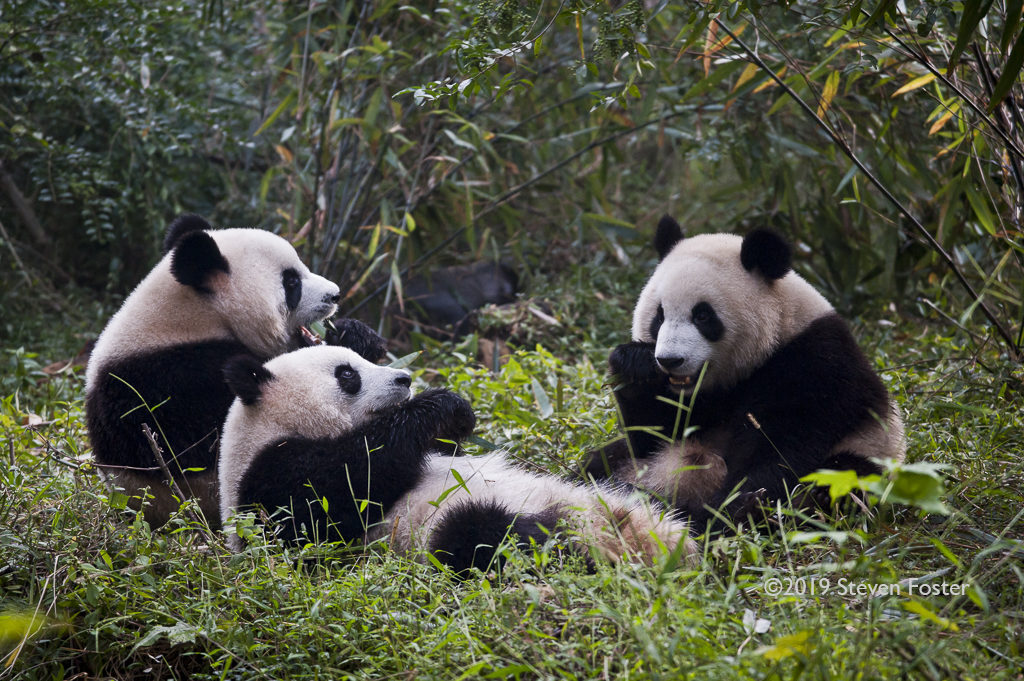
Pandas by Steven Foster
Some companies want to have codes where consumers can look to meet the farmer. What about meeting your farmer and the ecosystem, the habitat and the birds and all the animals that live there?
People in rural areas have a unique role and privilege in maintaining biodiversity. We need to support them to do extra work of maintaining these places, because those of us living in cities depend on them for survival.
If you are concerned about pollinators and pollinator die off and migratory birds and roaming areas of mammals or rainforests or carbon – one of the things you can do is be concerned about the rural areas and the rural economies and make sure people are compensated for what we really need them to do which is to protect those areas. Put a value on it. You’re going to pay more for your product but it is one way to do your part.
Ann: Looking back, what do you feel are the main accomplishments of the project?
Josef: It showed that it is feasible to brand wildlife friendly concepts in association with sustainable natural product ingredients and sourcing. All of these stakeholders — government workers, policy makers, (communist) party leaders and village leaders, commune/coop leaders, western companies, NGOs — built personal relationships and then we did something difficult together. And so it laid out the framework so that others can say, “That is feasible. We can try that here.”
I want to continue to explore wildlife friendly concepts not only with Traditional Medicinals but also with NGOS. I want to build awareness on platforms where I can link NGOs and companies together to explore the idea. And with others, I am figuring out three to five sites in the value chain where we can test market a wild life friendly branding, to see how that works.
Uncertainty?
Ann: Were there times you thought it was going to fall apart?
Josef: Yeh, there were points of uncertainty, but not too many. I had concerns about the technical support needed to ensure that the coop understood western requirements. That documentation and the compliance requirements for doing international business can be overwhelming for a small rural cooperative. It’s as foreign to one in Appalachia as it is in China. To them, all that stuff can seem like, “Are you kidding me? We have to do this and this and this and check this form and fill that out?” So my biggest worry was that the coop would drop out.
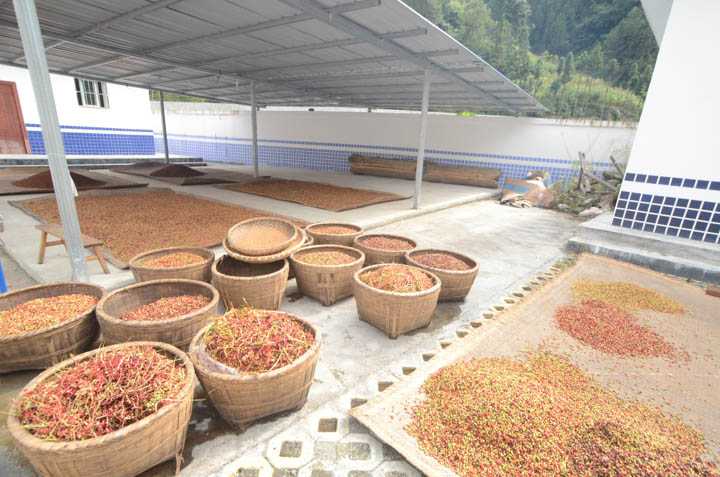
Post-washing half-shade drying of berries, photo by Josef Brinckmann
That’s why the international awards were really important because the coop members could get on the stage and see, “Wow, this is a really big deal.” They would in their village in the Minshan Mountains and see that their project was awarded the UNDP Equator prize and other achievement awards from Chinese government ministries – and that they were on the news. They could see that people cared about what they were doing.
It helped them to know that if it got too difficult they could reach out and ask for help. Sometimes we would get an email from the daughter of the president of the coop who was studying English. And I could write back or ask Jerry Wu, the head of Draco Natural Products to call someone in China to see what was going on or have someone from WWF China drive out there. We could keep things moving if there were uncertainties.
What Can I Do?
It’s a lot of work! Most companies just want to buy stuff. They want the raw material to show up on time and to put it in their products.
They hear about the level of work this took and they are like, “Are you kidding? We should be this involved in our supply chains?”
If every company – or say 100 companies – picked one plant out of the 100 plants they source and decided to dig deeply into its supply chain, we could make a lot of progress.
I talk to companies at Supply Side West and they ask me, “What can I do?”
And I say, “Just do something! Get curious! Pick one plant and go to its source. Find out what needs to be done.” He laughed. “I guarantee when you get there and you look around, you’ll figure out something needs to be done.” He laughed again.
I tell people take a chance, spend a little money and time to visit some of these sites and see what you can do. I got thrown off the edge of the peer on this stuff and just had to figure it out. That’s how I’ve learned what I now know how to do. I didn’t have any formal training. If people give you the room and you are interested and have the passion for it, a smart person or group of people working together – can figure things out and keep them moving. You just have to start.
[1] Brinckmann, J.A., W. Luo, Q.Xu, X.He, J.Wu, and A.B. Cunningham. Sustainable harvest, people and pandas: Assessing a decade of managed wild harvest and trade in Schisandra sphenanthera. Journal of Ethnopharmacology. June 2018; 224: 522-534.

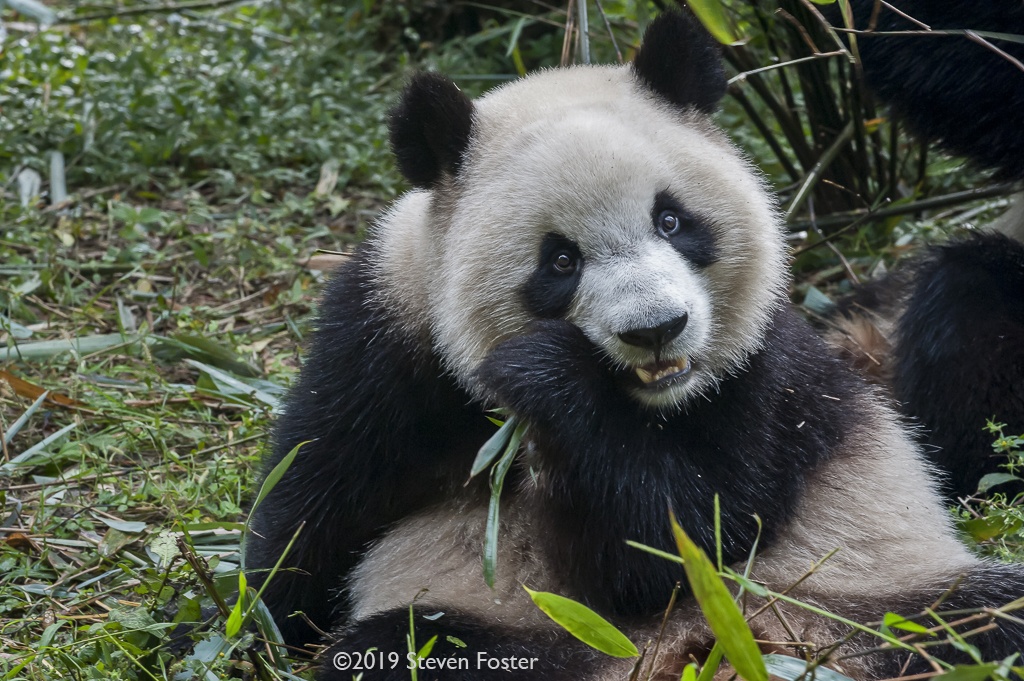
Comments